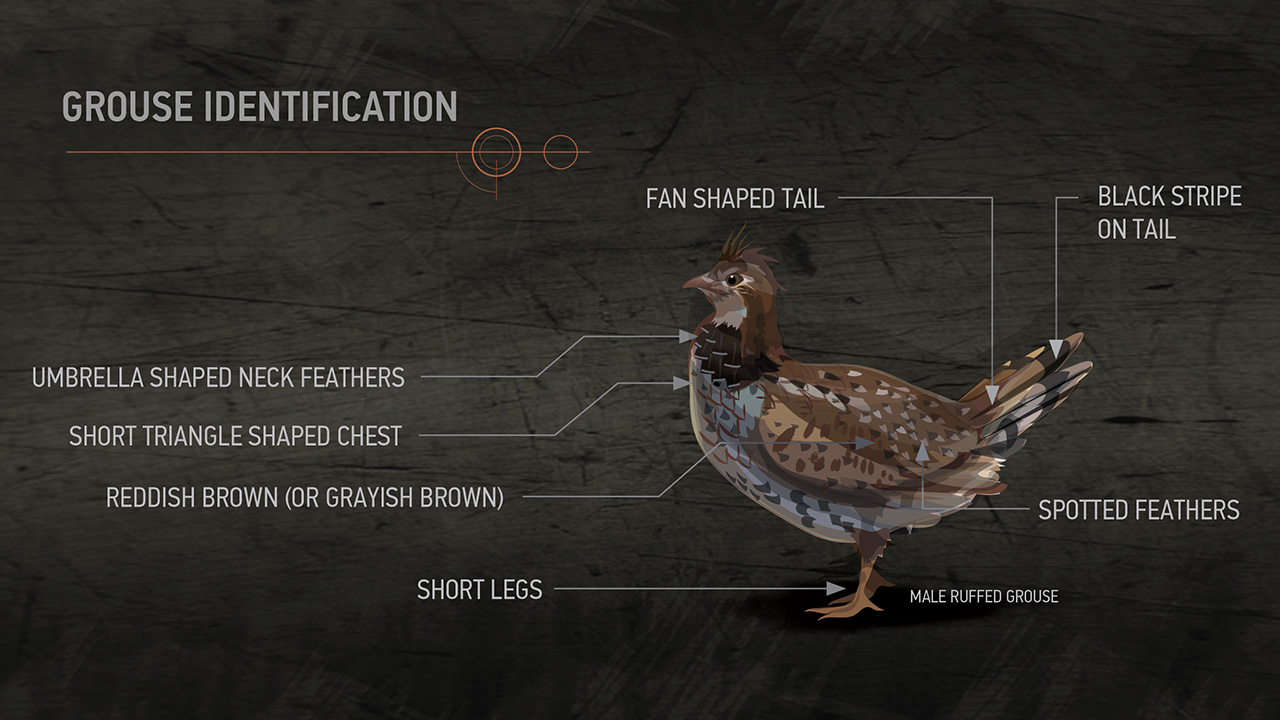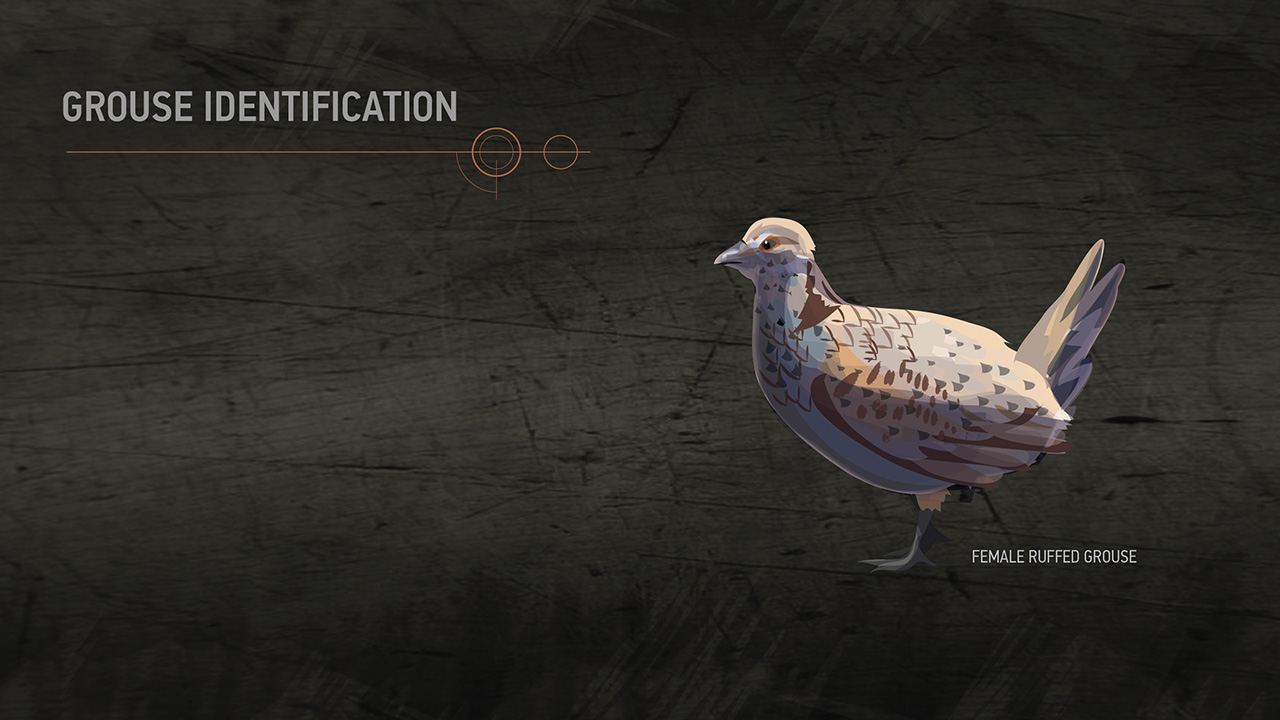HUNTINGsmart! USA Knowledge Base
Module 10 - WILDLIFE
GROUSE


Easily flustered, the grouse is a small bird with showy feathers—a favorite for hunters who like to be on the roam at sunrise.
Identification
Ruffed grouse get their name from the umbrella-shaped ruff of feathers they have encircling their head. The ruff on male grouse is more obvious than the ruff on females. Grouse also have short triangle-shaped chests, long, fan-shaped tails, short legs and a reddish-brown or greyish-brown colored body. Their feathers are patterned with spots and their tail feathers have a wide black band of color that stretches all the way across the tips.
Diet
These little birds feed on vegetation all year round. They prefer leaves, buds, ferns, plants and fruits, but to survive during the winter months, they’ll eat acorns and twigs as well. Insects also make up some of their diet.
Habitat
Grouse are shy and love to stay hidden, so you’ll find them in plenty of wooded areas with mixed aged tree growth, shrubs, grasses, etc. They nest on the forest floor by burrowing into a small indent (about 3 inches deep) and surrounding themselves with nearby cover, like tree stumps or rocks. They have a habit of burying themselves in brush or snow and then emerging at the last minute in a flurry of feathers if they’ve been startled or sense trouble.
Firearms, Ammo & Your Target
A lightweight shotgun shot will be the best option for grouse hunting—most hunters will use a 12, 16 or 20-gauge shotgun. The firearm must be easy to swing and easy to get on target quickly. Cylinder or skeet choke will be your best bet at getting a clean kill because when the grouse erupts from it’s cover, it will be very close to you (likely less than 20 yards away). Smaller pellets will do the job, such as No. 7½ shot. If the bird is heavily feathered, you can use a No. 6 shot.
Vital Zones
Aim for the head, heart and lungs. If your shot is accurate, you should hit all three areas with one trigger pull.



